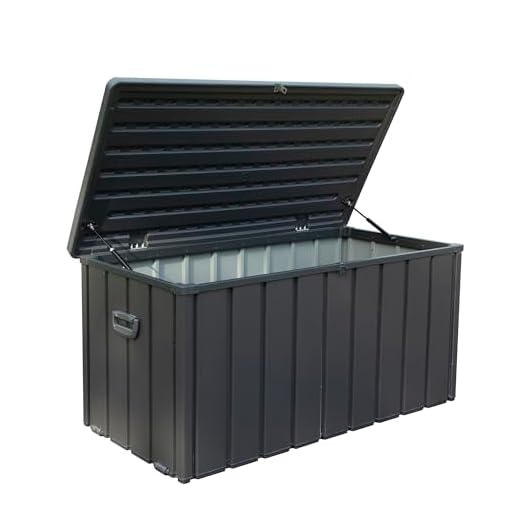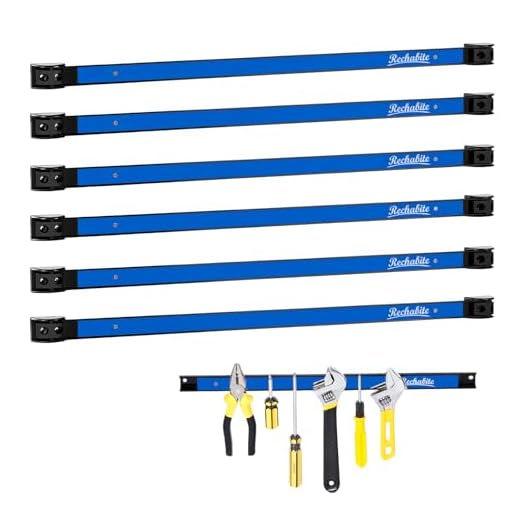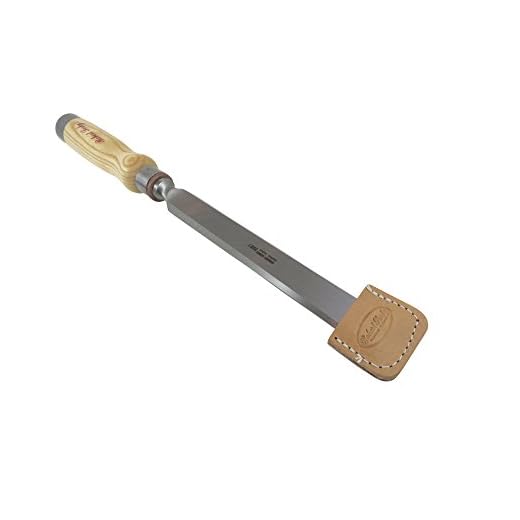




Chisels are essential tools for woodworking and other related crafts. They are used to shape, cut, and carve various materials, including wood, stone, and metal. While chisels are incredibly useful, they can also be dangerous if not stored safely. Improper storage can lead to injuries, dull edges, and damage to the overall quality of the chisels. In this article, we will discuss some important tips on how to store chisels safely to ensure both their longevity and your safety.
Tip 1: Clean and Dry Your Chisels
Before storing your chisels, it is crucial to clean them thoroughly to remove any debris or residue that may affect their cutting ability. Use a soft cloth or brush to wipe away any dirt or sawdust. Ensure that the blades are completely dry before putting them away to prevent rust from forming.
Tip 2: Use Individual Blade Protectors
To prevent the chisel blades from accidentally coming into contact with other tools or surfaces, it is recommended to use individual blade protectors. These protectors, usually made of plastic or rubber, cover the blade completely, ensuring that it remains sharp and undamaged. This also minimizes the risk of accidental injuries when searching for a particular chisel in your toolbox.
Tip 3: Store Chisels in a Dedicated Rack or Block
A dedicated rack or block is an excellent storage solution for chisels. It allows you to keep your chisels organized, easily accessible, and protected from any potential damage. The rack or block should have individual slots to hold each chisel securely, preventing them from rolling or bumping into each other. Additionally, make sure the rack or block is sturdy and placed in a location where it won’t be knocked over.
Tip 4: Consider Wall-Mounted Storage
If you have limited space in your workshop or toolbox, wall-mounted storage is a great option. Installing a pegboard or a wall-mounted rack allows you to hang your chisels in an organized manner, minimizing the chances of them getting misplaced or damaged. This method also makes it easier to spot the chisel you need, saving you time and effort.
By following these simple tips, you can ensure that your chisels remain sharp, safe, and in optimal condition for a long time. Prioritizing proper storage practices will not only prolong the lifespan of your chisels but also contribute to a safer working environment. Remember, a well-maintained chisel is a reliable tool that will assist you in creating exceptional woodworking projects.
Choosing the Right Storage Solution
When it comes to storing your chisels, it is important to choose the right storage solution. The right storage solution will not only keep your chisels organized and easily accessible, but it will also help to prevent them from getting damaged. Here are some factors to consider when choosing a storage solution for your chisels:
- Size: Consider the size of your chisels and choose a storage solution that can accommodate them. Make sure that the storage solution has compartments or slots that are wide enough to hold your chisels securely.
- Material: Look for a storage solution that is made of sturdy and durable material such as wood or metal. Avoid storage solutions made of weak materials that may not withstand the weight and pressure of your chisels.
- Protection: Your chisels need to be protected from moisture, dust, and other elements that can cause damage. Choose a storage solution that has a lid or cover to keep your chisels safe and clean.
- Accessibility: It is important that you can easily access your chisels when you need them. Look for a storage solution that allows you to quickly and easily retrieve your chisels without having to search through a pile or dig through other tools.
- Organization: A well-organized storage solution will help you keep your chisels in order and prevent them from getting lost or misplaced. Look for a storage solution that has dividers or compartments to keep your chisels separated and organized.
- Portability: If you need to take your chisels on the go, consider a storage solution that is portable and easy to carry. Look for a storage solution that has handles or straps for convenient transportation.
By considering these factors and choosing the right storage solution for your chisels, you can ensure that your chisels are safely stored and ready for use whenever you need them.
Factors to Consider
When it comes to safely storing chisels, there are several factors that should be taken into consideration. These factors can help ensure the longevity and performance of your chisels, as well as minimize the risk of accidents:
- Storage Location: Choose a suitable location for storing your chisels, away from high humidity, extreme temperatures, and direct sunlight. Ideally, they should be stored in a cool, dry place.
- Organizational System: Develop an organizational system that allows easy access and identification of each chisel. This could include using a pegboard, tool rack, or a dedicated chisel holder.
- Protective Covers: Use protective covers, such as blade guards or sheaths, to prevent accidental cuts and to protect the cutting edge from damage. These covers can be purchased or made using materials like leather or heavy-duty plastic.
- Secure Storage: Ensure that your chisels are stored securely, so they do not fall or become dislodged when not in use. This can be achieved by using clips, racks, or a tool chest with compartments.
- Sharpening Tools: Keep your sharpening tools separate from your chisels to prevent accidental damage to the blades. It is also important to keep the sharpening tools clean and in good condition.
By taking these factors into consideration, you can create a safe and organized storage system for your chisels that will prolong their lifespan and ensure they are always ready for use.
Organizing Your Chisels
Properly organizing your chisels not only helps keep them safe, but also ensures that you can easily find the right tool when you need it. Here are some tips on how to effectively organize your chisels:
- Separate by Size: Start by separating your chisels into different groups based on their sizes. This will help you easily identify the right tool for the task at hand.
- Use a Tool Roll or Pouch: Invest in a tool roll or pouch specifically designed for chisels. This will protect the cutting edges and prevent them from accidentally causing damage.
- Label Your Chisels: Consider labeling your chisels to make it easier to identify them at a glance. You can use a permanent marker or create custom labels using adhesive tape.
- Store Upright: When storing your chisels, always keep them upright to prevent the cutting edges from coming into contact with other tools or surfaces. This not only protects the chisels but also prevents unnecessary chipping or dulling.
- Invest in a Dedicated Tool Cabinet or Toolbox: If you have a large collection of chisels, consider investing in a dedicated tool cabinet or toolbox. This will not only provide ample storage but also help keep your chisels organized and easily accessible.
- Use Foam Inserts or Tool Racks: To prevent your chisels from rolling around or moving within a larger storage space, consider using foam inserts or tool racks. These can help keep your chisels securely in place and prevent damage.
- Clean and Oil Regularly: Finally, remember to clean and oil your chisels regularly as part of your organizing routine. This will help prevent rust and keep the cutting edges in optimal condition.
By following these tips, you can ensure that your chisels are well-organized, protected, and ready for use whenever you need them.
Using a Tool Chest
A tool chest is a versatile and effective storage solution for chisels. By using a tool chest, you can keep your chisels organized and easily accessible while also providing them with the protection they need to prevent damage. Here are some tips for using a tool chest to safely store your chisels:
| Step 1: | Choose the right tool chest: Look for a tool chest that is specifically designed for storing chisels. It should have compartments or slots to hold each chisel individually, keeping them separated and preventing them from knocking into each other. |
| Step 2: | Arrange the chisels properly: Place each chisel in its designated slot or compartment, with the cutting edge facing down and the handle facing up. This will help to ensure that the cutting edges are protected and prevent accidental injuries when reaching into the chest. |
| Step 3: | Secure the chisels: If your tool chest has a mechanism for securing the chisels, such as a latch or strap, use it to keep them in place. This will prevent the chisels from shifting during transport and minimize the risk of damage. |
| Step 4: | Store the tool chest properly: Find a safe and dry place to store your tool chest, away from children and pets. Make sure the chest is not exposed to extreme temperatures or moisture, as this can cause rust and other damage to the chisels. |
| Step 5: | Maintain your chisels regularly: Check your chisels regularly for any signs of damage or wear. Keep them clean and sharp, and replace any chisels that are no longer in good condition. This will help to extend their lifespan and ensure their continued effectiveness. |
By following these steps and using a tool chest, you can safely store your chisels and keep them in excellent condition. This will not only protect your investment but also make your woodworking projects more enjoyable and efficient.
Wall-Mounted Storage
Wall-mounted storage is another excellent option for storing your chisels securely and conveniently. This method allows you to keep your chisels within easy reach while also keeping them out of harm’s way.
There are several different types of wall-mounted storage solutions available, including chisel racks and magnetic tool holders. Chisel racks typically consist of a wooden or metal frame with slots or holes to hold the chisels. Magnetic tool holders, on the other hand, use strong magnets to hold the chisels in place.
When installing wall-mounted storage, it’s important to choose a location that is easily accessible and visible. You want to be able to quickly locate and grab the chisel you need without any hassle. Additionally, make sure the storage solution is securely attached to the wall to prevent it from falling or becoming dislodged.
Before mounting your chisels on a rack or magnetic tool holder, it’s a good idea to clean them and apply a thin coat of protective oil. This will help prevent rust and ensure that your chisels stay in pristine condition.
One advantage of wall-mounted storage is that it helps to free up valuable workbench space. Instead of cluttering your work area with chisels, you can keep them neatly organized and easily accessible on the wall.
| Pros | Cons |
|---|---|
| Keeps chisels secure and accessible | Requires wall space for installation |
| Frees up workbench space | May not be suitable for all workshop layouts |
| Prevents chisels from getting damaged or lost | May require additional cleaning and maintenance |
Overall, wall-mounted storage is an excellent choice for storing your chisels safely. It keeps them within easy reach, organizes your workspace, and helps prevent damage or loss. Consider installing wall-mounted storage to keep your chisels in top condition and ready for use.
Protecting Your Chisels
When it comes to working with chisels, it’s important to protect them from damage and keep them in good condition. Here are some tips to help you protect your chisels:
1. Proper Storage
One of the best ways to protect your chisels is to store them properly. Avoid leaving them lying around where they can be knocked off a workbench or get damaged. Instead, consider using a dedicated chisel rack or box to keep them organized and secure.
2. Blade Guards
Another option for protecting your chisels is to use blade guards. These guards are usually made of hard plastic or rubber and can be easily slipped onto the blade of the chisel. Blade guards provide a protective barrier, preventing the blade from getting damaged and protecting you from accidental cuts.
3. Sharpening and Maintenance
Keeping your chisels sharp is essential for their proper functioning and longevity. Regularly sharpening your chisels not only improves their cutting performance but also reduces the risk of accidents. Additionally, make sure to regularly clean and oil the metal parts of your chisels to prevent rust and corrosion.
4. Avoiding Hard Surfaces
When using your chisels, avoid striking them against hard surfaces like concrete or metal. This can cause the blade to chip or the handle to crack. Instead, use a softwood block or a wooden mallet to protect both the chisel and the surface you are working on.
5. Transporting Safely
If you need to transport your chisels, make sure to do so safely. Use a chisel roll or case to protect the blades and prevent them from damaging other tools or objects. Make sure to secure the roll or case properly to prevent the chisels from falling out during transport.
By following these tips, you can protect your chisels and ensure that they remain in great working condition for years to come.
Using Blade Guards
When it comes to storing your chisels safely, using blade guards is an essential step. Blade guards help protect the sharp edges of your chisels from getting damaged and also prevent any accidental injuries when handling them.
There are different types of blade guards available, such as plastic covers, leather sheaths, and magnetic strips. Plastic covers are the most common and inexpensive option. They are often sold in sets and come in various sizes to fit different chisel blades. Plastic covers provide a simple but effective way of protecting the chisel blades from any potential damage.
Leather sheaths are another popular option for storing chisels safely. They provide a more durable and long-lasting solution compared to plastic covers. Leather sheaths are usually custom-made to fit specific chisel sizes and provide a snug fit. They offer excellent protection against scratches, dings, and other forms of damage.
Magnetic strips are a convenient option for storing chisels, as they allow you to hang your chisels on a workshop wall or inside a toolbox. These strips have a magnetic surface that securely holds the chisel blades in place. This not only helps protect the edges of the chisels but also makes them easily accessible.
Regardless of the type of blade guard you choose, it’s important to ensure that the guard covers the entire length of the blade. This will prevent any accidental contact with the sharp edges and reduce the risk of injuries.
Remember to always clean and dry your chisels before placing them in the blade guards to prevent any moisture or rust accumulation. Properly storing your chisels with blade guards will not only keep them safe but also prolong their lifespan and maintain their cutting efficiency.
Applying Rust Inhibitors
One effective way to prevent rust from forming on your chisels is to apply rust inhibitors. Rust inhibitors are substances that create a protective barrier on the surface of the metal, preventing moisture and oxygen from reaching it and causing corrosion.
Before applying rust inhibitors, it is important to clean the chisels thoroughly to remove any existing rust or dirt. You can use a wire brush or sandpaper to gently scrub the surface of the chisels and ensure they are free from debris.
Once the chisels are clean, you can apply the rust inhibitor. There are various types of rust inhibitors available, including sprays, oils, and waxes. Choose a rust inhibitor that is specifically designed for metal tools and follow the manufacturer’s instructions for application.
When applying the rust inhibitor, make sure to coat the entire surface of the chisels. Pay extra attention to the cutting edges and any areas that are prone to rusting. Use a cloth or a brush to evenly spread the rust inhibitor and ensure full coverage.
After applying the rust inhibitor, allow it to dry completely before storing the chisels. This will ensure that the protective barrier is fully formed and able to effectively prevent rust from developing.
Remember to regularly check and reapply rust inhibitors as needed, especially if the chisels are used frequently or exposed to high levels of moisture. By taking these preventative measures, you can keep your chisels in top condition and extend their lifespan.









